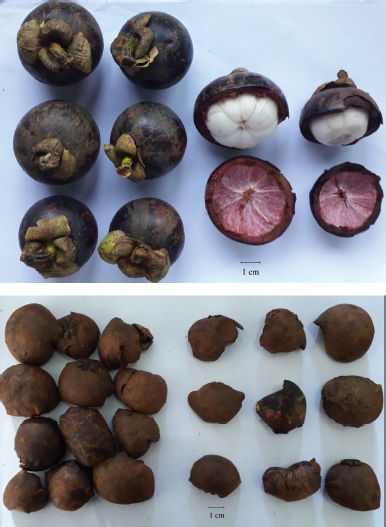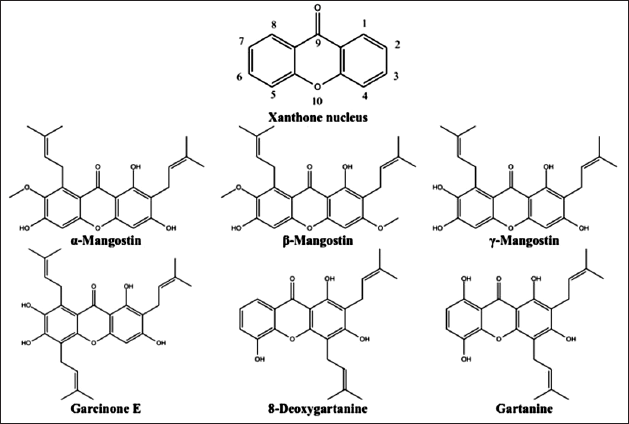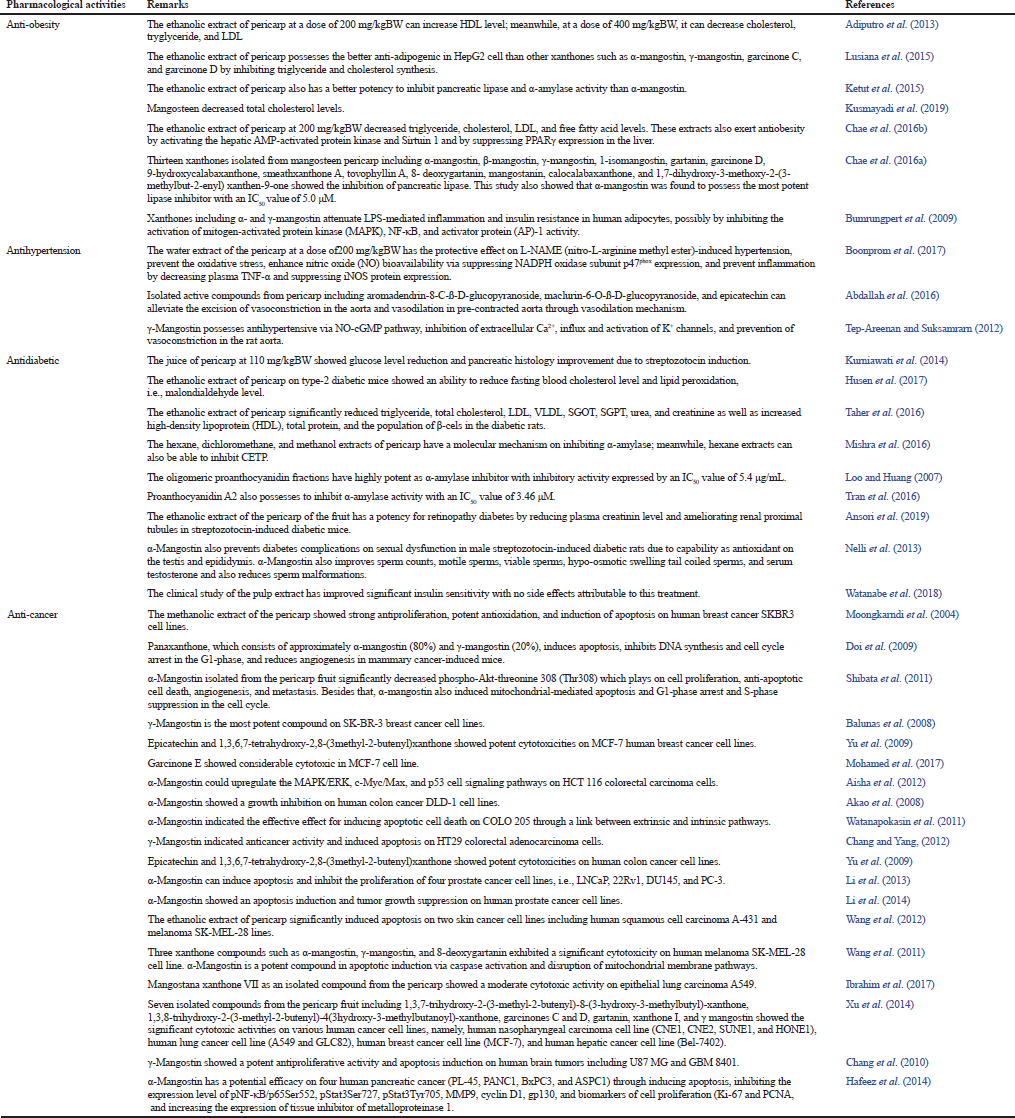INTRODUCTION
In recent years, non-communicable diseases (NCDs) have become the major cause of mortality in both developing and developed countries (Saklayen, 2018). Among all these NCDs, the metabolic diseases have been associated with life behavior (Kaur, 2014; Saklayen, 2018). Metabolic syndromes are a cluster of metabolic abnormalities, which can be marked by the interconnectedness of physiological, biochemical, clinical, and metabolic factors, so that they can promote various diseases such as obesity, hypertension, hyperglycemic, cancer, and other diseases (Kaur, 2014; Saklayen, 2018; Srikanthan et al., 2016).
Nowadays, the lifestyle behavior has shifted toward a more health awareness behavior such as a consumption of value-added products and health-boosting foods and drinks containing some bioactive compounds mainly phenolics and flavonoids having potential activities to lower the risk of diseases (Bigliardi and Galati, 2013; Dell’agli et al., 2013; Siró et al., 2008). One of the common food supplements is derived from the plant bioactive compounds present in leaves, fruit, bark, and other parts (Cencic and Chingwaru, 2010). Garcinia mangostana L. is a potential plant which has evidence of broad pharmacological activities (Obolskiy et al., 2009).
Garcinia mangostana L. or mangosteen, belonging to the genus Garcinia (family: Clusiaceae), is an evergreen and lactiferous tree (Lim, 2012; The Plant List, 2013). It is a native to the Malay archipelago and distributed in the tropical area. The fruit is a berry, globose to subglobose, smooth, turning from pale green to pink to maroon to dark purple-black when ripe and has a size of approximately 4–7 cm in diameter (Fig. 1). Mangosteen fruit is usually eaten as dessert, which is well known as the queen of fruits. As a consequence, the waste of the pericarp and seed is abundance. Therefore, there are some research works on exploring health-beneficial of underutilized part of mangosteen in both pericarp and seed as food supplements (Ovalle-Magallanes et al., 2017). Many researchers have found a number of beneficial phytochemical constituents in both pericarp and seed of mangosteen plant including xanthones, benzophenones, flavonoids, and anthocyanins (Chin and Kinghorn, 2008; Lim, 2012). Xanthones are phytochemical constituents, which have many health benefits particularly for metabolic diseases (Pedraza-Chaverri et al., 2008).
Some review articles existed in relation to mangosteen fruit. Rohman et al. (2019)explained the chemical composition and antioxidant studies of the underutilized part of mangosteen. However, this review failed to explore the other effects of mangosteen in preventing the metabolic disorders such as lipid metabolism disorder, high blood pressure, diabetes, and cancer. Gutierrez-Orozco and Failla (2013)discussed the biological activities of xanthones (as main component in mangosteen) as antioxidant, antiproliferative, proapoptotic, anti-inflammatory, and anticarcinogenic activities along with molecular mechanism underlying these biological activities. A similar review also existed related to biological activities of xanthones isolated from mangosteen pericarp as antineoplastic agent, antioxidant, antiproliferation, and induction of apoptosis (Chen et al., 2018). Both the review articles did not inform the other components such as flavonoid and phenolics contributing the biological activities. Besides, this review also did not explain the safety issues related to xanthone derivatives.
 | Figure 1. Photographs of Garcinia mangostana L. fruit (a) fresh, (b) dried. [Click here to view] |
Wang et al. (2017)discussed the biological activities of compounds belonging to isoprenylated xanthones present in mangosteen pericarp. The numerous in vitro and in vivo studies possess diverse pharmacological activities, such as antibacterial, antifungal, antimalarial, anticarcinogenic, and antiatherogenic activities as well as neuroprotective properties in Alzheimer's disease. However, this article did not explore wider metabolic disorders such as lipid disorders and diabetic diseases. In this review, we provided the current reports on the phytochemical and pharmacological progress, especially for metabolic diseases and toxicological study to convince the consumers and patients. More importantly, this study was expected to promote researchers and stakeholders to develop further investigations of the underutilized part of mangosteen as food supplements.
PHYTOCHEMICAL PROPERTIES
The previous investigations on phytochemical of the underutilized part of mangosteen fruit revealed the abundance of xanthones, benzophenones, flavonoids, and anthocyanins (Chin and Kinghorn, 2008; Lim, 2012). Health benefits of the underutilized part of this fruit are focussed on xanthones, particularly α-, β-, and γ-mangostins, garcinone E, 8-deoxygartanine, and gartanine having the chemical structures as shown in Figure 2(Pedraza-Chaverri et al., 2008). Besides that, xanthones have been isolated from pericarp, whole fruit, heartwood, stem bark, root bark, and leaves of mangosteen (Pedraza-Chaverri et al., 2008). In the present profile, all known secondary metabolites of the underutilized part of mangosteen fruit found in the literature are shown in Table 1.
HEALTH BENEFITS FOR METABOLIC DISEASES
Several publications reported the biological activities of the underutilized part of mangosteen, including anti-obesity and lipid metabolism disorder, antihypertensive, antidiabetic, and anticancer activities (Table 2).
Obesity and lipid metabolism disorder
Obesity is an abnormality of adipose tissue due to its excessive secretion of adipokines having a major contribution in the pathophysiology of diabetes mellitus, insulin resistance, dyslipidemia, hypertension, and atherosclerosis (Redinger, 2007). There are numerous pharmacological activities related to anti-obesity and lipid metabolism disorder, including anti-adipogenic, antihyperlipidemic, anti-inflammatory, and antioxidant activity (Adiputro et al., 2013; Liu et al., 2014; Lusiana et al., 2015). Besides, the molecular mechanisms are also proposed, such as decreasing the induction by lipopolysaccharide of inflammatory genes, preventing the insulin resistance in human adipocytes, inhibiting the pancreatic lipase and α-amylase, and activating monophosphate-activated protein kinase (AMP)-activated protein kinase (Bumrungpert et al., 2009; Chae et al., 2016a; 2016b; Ketut et al., 2016).
 | Figure 2. Xanthone nucleus and structure belong to some xanthones of G. mangostana L. (approximately here). [Click here to view] |
The ethanolic extract of mangosteen pericarp at a dose of 200 mg/kgBW can increase HDL level; meanwhile, at a dose of 400 mg/kgBW, it can decrease cholesterol, triglyceride, and low-density lipoprotein (LDL) (Adiputro et al., 2013). Lusiana et al. (2015)reported that the ethanolic extract of mangosteen pericarp possesses a better anti-adipogenic in human liver carcinoma cells (HepG2) cell than other xanthones, such as α- and γ-mangostin, garcinone C, and garcinone D by inhibiting triglyceride and cholesterol synthesis. Besides, the extract of fruit pericarp has a better potency to inhibit pancreatic lipase and α-amylase activity than that of α-mangostin. However, its activity was still lower than the standard active pharmaceutical ingredients of orlistat and acarbose (Ketut et al., 2016). Recently, Kusmayadi et al. (2019)also reported that mangosteen decreased total cholesterol levels due to the presence of xanthones having hypocholesterolemic activity capable of reducing cholesterol levels. During the cholesterol formation, there is a stage of squalene synthesis. The antioxidant compounds (xanthone derivatives) could inhibit the squalene synthesis, and thus, cholesterol formation could be decreased (Chomnawang et al., 2007).
An in vivo study by Chae et al. (2016b)indicated that the ethanolic extract of mangosteen pericarp at 200 mg/kgBW decreased triglyceride, cholesterol, LDL, and free fatty acid levels. These extracts also exert anti-obesity by activating the hepatic AMP-activated protein kinase and Sirtuin 1 and by suppressing peroxisome proliferator-activated receptors (PPARγ) expression in the liver (Chae et al., 2016b). Thirteen xanthones isolated from mangosteen pericarp including α-, β-, and γ-mangostin, 1-isomangostin, gartanin, garcinone D, 9-hydroxycalabaxanthone, smeathxanthone A, tovophyllin A, 8-deoxygartanin, mangostanin, calocalabaxanthone, and 1,7-dihydroxy-3-methoxy-2-(3-methylbut-2-enyl) xanthen-9-one showed the inhibition of pancreatic lipase (Chae et al., 2016a). This study also showed that α-mangosten was found to possess the most potent lipase inhibitor with an IC50 value of 5.0 μM; meanwhile, orlistat as positive control has an IC50 of 3.9 μM (Chae et al., 2016a). Besides, xanthones including α- and γ-mangostin attenuate LPS-mediated inflammation and insulin resistance in human adipocytes, possibly by inhibiting the activation of mitogen-activated protein kinase (MAPK), NF-κB, and activator protein (AP)-1 activity (Bumrungpert et al., 2009).
Reducing high blood pressure
Hypertension is a main risk of cardiovascular disease, including ischemic heart disease, ultimately cardiac failure, coronary artery disease, artial fibrillation, and peripheral vascular disease (Boonprom et al., 2017; Slivnick and Lampert, 2019). Some research works have been proven that mangosteen pericarp has antihypertensive activity. The water extract of the pericarp at a dose of 200 mg/kgBW has the protective effect on nitro-L-arginine methyl ester (L-NAME)-induced hypertension and cardiovascular remodeling. This extract might prevent the oxidative stress induced by L-NAME and enhance the nitric oxide (NO) bioavailability via suppressing NADPH oxidase subunit p47phox expression. Furthermore, this extract can prevent inflammation development in L-NAME hypertensive rats by decreasing plasma tumor necrosis factor-α (TNF-α) and suppressing iNOS protein expression (Boonprom et al., 2017).
Another report showed that some isolated active compounds from mangosteen pericarp including aromadendrin-8-C-ß-D-glucopyranoside, maclurin-6-O-ß-D-glucopyranoside (rhodanthenone), and epicatechin can alleviate the excision of vasoconstriction in the aorta and vasodilation in precontracted aortae through vasodilation mechanism (Abdallah et al., 2016). Besides, γ-mangostin possesses antihypertensive via NO-cGMP pathway, inhibition of extracellular Ca2+, influx and activation of K+ channels, and prevention of vasoconstriction in the rat aorta.
 | Table 1. Secondary metabolites contained in different parts of Garcinia mangostana L. [Click here to view] |
 | Table 2. Pharmacological activities of G. mangostana L. [Click here to view] |
Antidiabetic activity
Diabetes mellitus (DM) is one of the most common chronic endocrine and metabolic diseases which become a main problem to human health around the world (Ighodaro et al., 2018; Maleki et al., 2019). DM is characterized by insufficient insulin secretion, resistance to the action of insulin, or both. DM is marked by hyperglycemia as clinical manifestation and can lead to complications known as neuropathy, nephropathy, retinopathy, cardiovascular, cerebrovascular, and peripheral vascular disease (DiPiro et al., 2008; Glasheen et al., 2017; Yeung et al., 2018). Recently, there are numerous reports on the antidiabetic activity of extracts and isolated compounds from mangosteen.
An in vivo study of the juice of mangosteen pericarp at 110 mg/kgBW showed a glucose level reduction and pancreatic histology improvement due to streptozotocin induction (Kurniawati et al., 2014). The investigation of ethanolic extract of the pericarp of the fruit on type-2 diabetic mice showed an ability to reduce fasting blood cholesterol level and lipid peroxidation, i.e., malondialdehyde level (Husen et al., 2017). The ethanolic extract of the pericarp of the fruit also significantly reduced triglyceride, total cholesterol, LDL, very low-density lipoprotein (VLDL), serum glutamic oxaloacetic transaminase (SGOT), serum glutamic pyruvic transaminase (SGPT), urea, and creatinine as well as increased high-density lipoprotein (HDL), total protein, and the population of β-cells in the diabetic rats (Taher et al., 2016).
Mishra et al. (2016)investigated that hexane, dichloromethane, and methanol extracts of mangosteen pericarp have a molecular mechanisms on inhibiting α-amylase; meanwhile, hexane extracts can also be able to inhibit cholesteryl ester transferase protein (CETP). Loo and Huang (2007) demonstrated that oligomeric proanthocyanidin fractions have an highly potent α-amylase inhibitor with inhibitory activity expressed by an IC50 value of 5.4 μg/ml, whereas acarbose as the positive control has an IC50 value of 5.2 μg/mL. Besides, proanthocyanidin A2 also possesses to inhibit α-amylase activity with an IC50 value of 3.46 μM (Tran et al., 2016).
Diabetic complications were also studied including retinopathy diabetes and sexual dysfunction. The ethanolic extract of the pericarp of the fruit has a potency for retinopathy diabetes by reducing plasma creatinin level and ameliorating renal proximal tubules in streptozotocin-induced diabetic mice (Ansori et al., 2019). Besides that, α-mangostin also prevents diabetes complications on sexual dysfunction in male streptozotocin-induced diabetic rats. It is suggested that α-mangostin has a capability as antioxidant on the testis and epididymis. Alfa-mangostin also improves sperm counts, motile sperms, viable sperms, hypo-osmotic swelling tail-coiled sperms, and reduced sperm malformations. Besides, α-mangostin showed the increasing level of serum testosterone (Nelli et al., 2013).
Insulin-sensitizing treatments are known to be effective to prevent diabetes and to induce weight loss. There is a wide association between insulin resistance and obesity/type 2 diabetes (T2DM), and obesity and T2DM are also associated with increased inflammation (Romeo et al., 2012). The clinical study has reported that mangosteen has improved a significant insulin sensitivity with no side effects attributable to this treatment, suggesting a possible supplementary role of mangosteen extracts in the treatment of obesity, insulin resistance, and inflammation (Watanabe et al., 2018).
Anticancer activity
Several studies have been designed to examine the anticancer activity of both extracts and isolated compounds from the underutilized part of mangosteen fruit. The methanolic extract of the pericarp fruit showed strong antiproliferation, potent antioxidation, and induction of apoptosis on human breast cancer SKBR3 cell lines (Moongkarndi et al., 2004). Panaxanthone, which consists of approximately α-mangostin (80%) and γ-mangostin (20%), induces apoptosis, inhibits DNA synthesis and cell cycle arrest in the G1-phase, and reduces angiogenesis in mammary cancer-induced mice (Doi et al., 2009). The α-mangostin isolated from the pericarp fruit significantly decreased phospho-Akt-threonine 308 (Thr308), which plays a vital role on cell proliferation, antiapoptotic cell death, angiogenesis, and metastasis. Besides that, α-mangostin also induced mitochondrial-mediated apoptosis and G1-phase arrest and S-phase suppression in the cell cycle (Shibata et al., 2011). Balunas et al. (2008)reported that γ-mangostin is the most potent compounds among 12 xanthones from α-mangostin pericarp on SK-BR-3 breast cancer cell lines. On the other hand, epicatechin and 1,3,6,7-tetrahydroxy-2,8-(3methyl-2-butenyl) xanthone showed potent cytotoxicities on human breast cancer cell line (MCF)-7 human breast cancer cell lines (Yu et al., 2009). Garcinone E also showed considerable cytotoxic in MCF-7 cell line (Mohamed et al., 2017).
The chemical constituents from the underutilized part of mangosteen also revealed the promising agent as colon anticancer. α-mangostin could upregulate the MAPK/ extracellular signal-regulated kinase (ERK), c-Myc/Max, and p53 cell signaling pathways on HCT 116 colorectal carcinoma cells (Aisha et al., 2012). Besides, α-mangostin also showed a growth inhibition on human colon cancer DLD-1 cell lines (Akao et al., 2008). Besides, α-mangostin also indicated the effective effect for inducing apoptotic cell death on COLO 205 through a link between extrinsic and intrinsic pathways (Watanapokasin et al., 2011). γ-mangostin also indicated anticancer activity and induced apoptosis on HT29 colorectal adenocarcinoma cells (Chang and Yang, 2012). Other compounds such as epicatechin and 1,3,6,7-tetrahydroxy-2,8-(3methyl-2-butenyl) xanthone showed potent cytotoxicities on human colon cancer cell lines (Yu et al., 2009).
The α-mangostin has been reported to induce apoptosis and inhibit the proliferation on four prostate cancer cell lines (LNCaP, 22Rv1, DU145, and PC-3) (Li et al., 2013). Besides that, α-mangostin also showed an apoptosis induction and tumor growth suppression on human prostate cancer cell lines (Li et al., 2014). On another cell type, the ethanolic extract of mangosteen pericarp significantly induced apoptosis on two skin cancer cell lines including human squamous cell carcinoma A-431 and melanoma SK-MEL-28 lines (Wang et al., 2012). Three xanthone compounds such as α-mangostin, γ-mangostin, and 8-deoxygartanin exhibited a significant cytotoxicity on human melanoma SK-MEL-28 cell line. The α-mangostin is a potent compound in apoptotic induction via caspase activation and disruption of mitochondrial membrane pathways (Wang et al., 2011).
Mangostanaxanthone VII as an isolated compound from the pericarp of mangosteen showed a moderate cytotoxic activity on epithelial lung carcinoma A549 (Ibrahim et al., 2017). Seven isolated compounds from the pericarp fruit including 1,3,7-trihydroxy-2-(3-methyl-2-butenyl)-8-(3-hydroxy-3-methylbutyl)-xanthone, 1,3,8-trihydroxy-2-(3-methyl-2-butenyl)-4(3-hydroxy-3-methylbutanoyl)-xanthone, garcinones C and D, gartanin, xanthone I, and γ mangostin showed the significant cytotoxic activities on various human cancer cell lines, namely. human nasopharyngeal carcinoma cell line (CNE1, CNE2, SUNE1, and HONE1), human lung cancer cell line (A549 and GLC82), human breast cancer cell line (MCF-7), and human hepatic cancer cell line (Bel-7402) (Xu et al., 2014).
The γ-mangostin showed a potent antiproliferative activity and apoptosis induction on human brain tumors including U87 MG and GBM 8401 (Chang et al., 2010). On the other hand, α-mangostin suggested a potential efficacy on four human pancreatic cancers (PL-45, PANC1, BxPC3, and ASPC1). The mechanisms underlying these efficacies are through inducing apoptosis, inhibiting the expression level of pNF-κB/p65Ser552, pStat3Ser727, pStat3Tyr705, MMP9, cyclin D1, gp130, and biomarkers of cell proliferation (Ki-67 and proliferating cell nuclear antigen (PCNA), and increasing the expression of tissue inhibitor of metalloproteinase 1 (Hafeez et al., 2014).
Toxicological Studies
The toxicological studies are needed to assure the safety of mangosteen extracts; therefore, some reports on the safety of the underutilized part of mangosteen have been highlighted. The acute toxicity at the doses of 1.0, 2.0, and 3.0 g/kgBW of mangosteen pericarp extract did not produce any significant dose-related change of hematological parameters and did not show any significant toxic effects (Priya et al., 2010). A subchronic toxicity of the hydroethanolic mangosteen pericarp at the doses of 400, 600, and 1,200 mg/kgBW showed no effect on behavior, food, and water intake, growth, or health status in animal models (Hutadilok-Towatana et al., 2010).
Chivapat et al. (2011)reported the chronic toxicity of the ethanolic pericarp extract of mangosteen at the doses of 10, 100, 500, and 1,000 mg/kgBW. They did not show any pharmacotoxic signs and abnormalities in the hematological parameters. However, this extract at a dose of 500 mg/kgBW onward affected the body weight and increased in ALT, BUN, and creatinine. On the other hand, the seed oil of mangosteen fruit showed no lesion in the heart, liver, and spleen for 8 weeks. However, histopathology of the kidney had some pathology degrees such as diffuse glomerular and tubular degeneration (Ajayi et al., 2007).